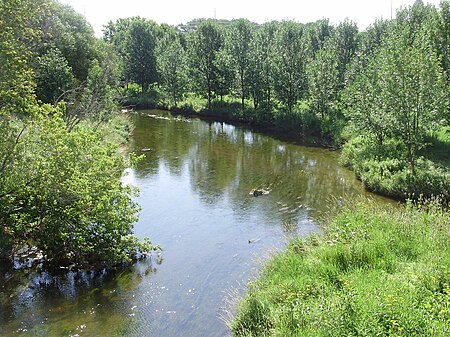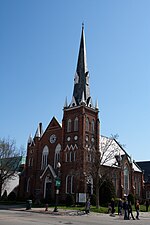Sixteen Mile Creek (Halton Region)

Sixteen Mile Creek is a river in Halton Region in the Greater Toronto Area of Ontario, Canada. It is in the Great Lakes Basin, and flows from the Niagara Escarpment through the towns of Milton and Oakville to Lake Ontario.The creek is named for the distance from the river's mouth to the western end of Lake Ontario. It was previously known to the Mississauga Indians in their language as Ne-sauga y-onk or niizhozaagiwan ("having two outlets") and to the French as Rivière de Gravois ("gravelly river").Like many creeks draining into Lake Ontario, Sixteen Mile Creek has cut a deep valley that is home to a broad range of wildlife, including whitetail deer, raccoons, foxes, opossum, and squirrels. The forest contains tree species typical of the Carolinian forest habitat, although since this is close to the northern limit of this zone, some are poorly represented. The total area of the drainage basin is 372 square kilometres (144 sq mi).In Oakville, it also forms part of Glen Abbey Golf Course and is home to the Oakville Yacht Squadron.
Excerpt from the Wikipedia article Sixteen Mile Creek (Halton Region) (License: CC BY-SA 3.0, Authors, Images).Sixteen Mile Creek (Halton Region)
Walker Street, Oakville
Geographical coordinates (GPS) Address Nearby Places Show on map
Geographical coordinates (GPS)
| Latitude | Longitude |
|---|---|
| N 43.439444444444 ° | E -79.665833333333 ° |
Address
Walker Street
L6K 1A4 Oakville
Ontario, Canada
Open on Google Maps






